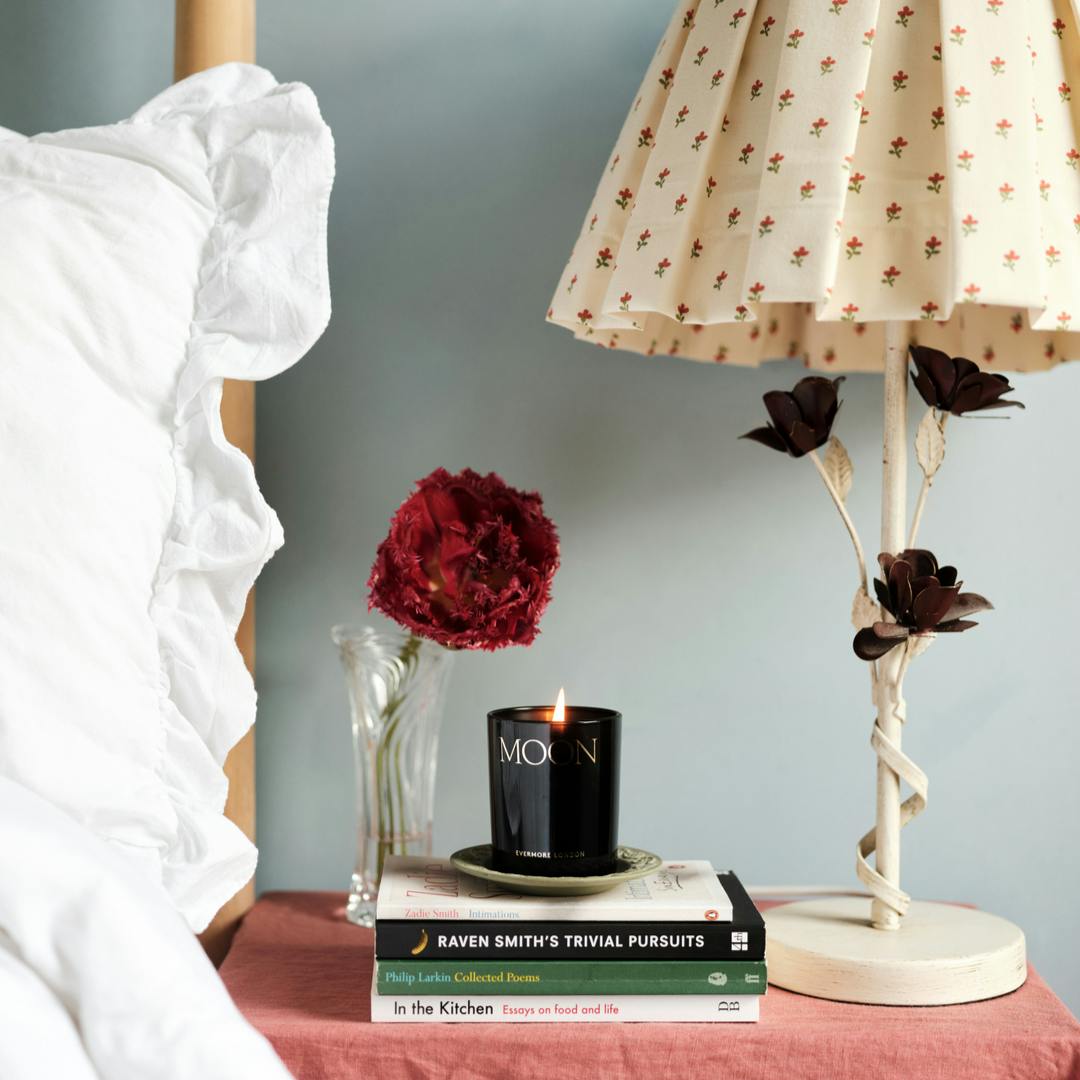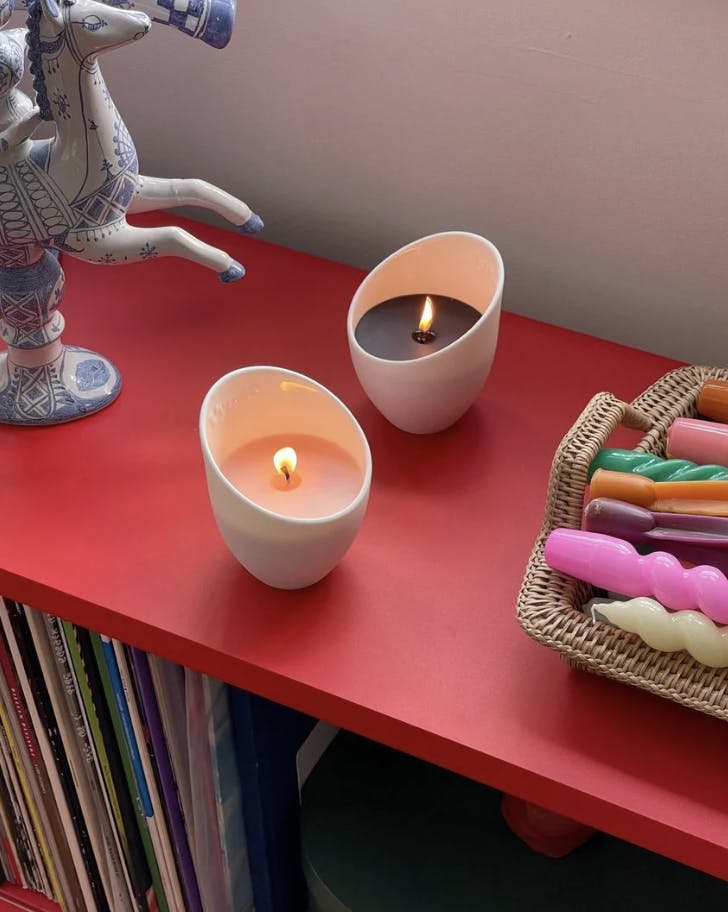
Secrets Of A Great Smelling Home
A beautifully fragranced space starts with understanding the basics around scenting your home, from knowing where to place and light a candle that fills a room, to the cleaning habits and rituals that ensure your space always feels fresh. Whether you’ve just moved into a new home that needs an injection of comfort and warmth, or want to create a scent experience that feels welcoming for both you and your loved ones, we set about uncovering the secrets to creating a great smelling home, featuring some of our favourite Glassette scents.
The importance of a neutral scent starting point:
The lingering scent of roast potatoes on a Sunday evening can be a welcome source of solace in your home, but prolonged cooking smells or dog-walk-soaked trainers by the door can throw off the overall aroma of home. Establishing a neutral scent within your space is the first step to achieving a great smelling home, and in practice requires minimal effort to achieve. Periodically opening your windows, whether it be to air through condensation from a particularly steamy cooking marathon or long drawn out bath is the perfect way to cleanse your home, carrying indoor air pollutants out of the air, whilst also offering physical and mental health benefits too.
During the depths of winter when conserving heat is essential, homemade deodorising mixtures can help to absorb unwanted scents in a simple and cost effective way. Try mixing one cup of baking soda with 15 drops of essential oil and an optional teaspoon of dried herbs (such as rosemary, lavender, or mint) before shaking thoroughly and placing in a small dish. Alternatively, simmering stovetop potpourri (which can be altered seasonally to include sweet smelling cinnamon or fresh lemon) is another simple way to neutralise odours in the home, and welcome in a naturally fresh aroma. Regularly ensuring food waste is taken outside undoubtedly contributes to an overall cleaner and more neutral scent in the home, allowing you to create a purposeful and curated scent experience in each room.
Spoilt for choice - Candles, oils, incense or diffusers:
The differing ways in which fragrance can be introduced into a room offer differing benefits, and the desire for subtle versus impactful scents can alter the means in which you decide to scent your space. For long lasting and continued fragrance, reed diffusers offer a continuous, gentle fragrance that forms an ever present aspect of a room’s identity. Eym Naturals Rest Standard Diffuser is a one such soothing addition to a room, offering a subtle yet calming aroma that makes it perfect for placement in a bedroom or reading nook.
For occasions in which a more potent scent is desired, the addition of a candle provides both a strong injection of fragrance and a soft ambience to a room, whether it be for a cosy evening alone or an intimate dinner with loved ones. Candles can fill a room with fragrance very quickly, making them the optimum choice for times in which adding a feeling of renewed energy to a room is the aim.
Perfect for those whose home is a treasured space for relaxation and recuperation, burning incense not only adds a powerful scent to a room, but also promotes a sense of mindfulness and perhaps a welcome moment to pause and unwind. Incense generally burns for less than an hour, offering a quick burst of fragrance that lingers in your space, whether it be scenting a long soak in the bath or time dedicated to meditation and journaling during your evenings. Vyrao’s Witchy incense makes a case as the ultimate choice for moments like these, with thorny rose, frankincense and nutmeg providing an enchanted fragrance for your space, designed with raising your energetic field in mind.
Whether used with an oil burner or diffuser to naturally scent the room, or as part of a DIY home fragrance spray when diluted, oils bring a lost lasting scent to a space that can be used to refresh soft furnishings or as a permanent fragrance in any room. Opt for a lavender infused scent to induce sleep in the bedroom, or fresh citrus for a boost of energy in a home study, and lap up the cleansing benefits of essential oils in the home. Cedar’s Sulis essential oil blend of eucalyptus, lavender and mandarin is the ultimate antidote to stress, adding a welcome sense of calm to your home and making for the perfect long soak in the bath accompaniment.
Scent makes us feel, and the meaning and benefits of a beautifully fragranced home run deeper than simply triggering our sense of smell. Yasmin Sewell, founder of wellbeing and fragrance brand Vyrao, emphasises the transformative power scent has in improving our sense of wellbeing and health.
“When creating Vyrao I was thinking about how we can heal and change the way we feel through scent and our space and home. All of the fragrances and candles that we make are created to specifically evoke certain good emotions.” A great smelling home can contribute to our overall wellbeing.

Choosing the right candle for you:
Shopping online for fragrance can feel like a difficult task, relying on existing knowledge of scents you love and forcing you to imagine fragrances from description alone. Candles derived from different materials create different burning experiences, and knowing which you prefer can be the first step in helping you choose a candle that feels most ‘you’.
Soy: Derived from soybeans, soy wax is an environmentally friendly choice, created from renewable resources and with non-toxic properties that are safe for the skin and respiratory system. Soy wax burns slower than paraffin candles, typically resulting in laster longing candles and burn time.
Paraffin: Often the most popular material for poured candles, paraffin is made from crude oil and when fully refined is non-toxic and safe for home use. Paraffin candles can hold a high level of fragrance and often produce the strongest scent.
Beeswax: Used for centuries as an all-natural candle wax source, beeswax candles are hypo-allergenic and can improve air quality, burning with little to no smoke.
Fragrances typically fall into four main categories: oriental, woody, fresh and floral. Understanding which scent category, and consequent subcategory, you naturally gravitate towards can help to inform fragrance purchases even when you’re not able to physically smell a candle in person. Different spaces within your home likely conjure up different feelings, whether it be the need to focus, the desire to unwind or a space to be sociable, and the more you explore which sections of the fragrance wheel you feel naturally fitting, the more clarity you will experience in purchasing new fragrances in the future.
If you are drawn to earthy, muted and warm fragrances that feel captivating at their core (think sandalwood, cedarwood and amber), try scents that fall into the ‘woody’ segment of the fragrance wheel.
Try: Lilac by CasaCarta, Ember by Vyrao, Tides by Evermore London, Tobacco by Amanita Labs
For those who love florals (often considered the most popular segment), look no further than sweet and enticing ingredients such as rose, jasmine, lily and peony. Floral fragrances can range from being light and delicate, to more complex and intense.
Try: Large Eye Candle by CasaCarta, Chun Tian Candle by Homework, Calypso Rose by Polkra
Exotic and seductive, scents in the oriental segment are often warm, sweet and occasionally spicy. Look for amber, spices, vanilla, and musk.
Try: Oakmoss and Thyme Candle by Plum and Ashby, Smoke & Musk by Earl of East, Atlas Cedar by Earl of East
Fresh fragrances feel light and bright, often with zesty, citrus components. Look out for lemon, mandarin and bergamot.
Try: Greenhouse by Earl of East, Seaweed and Samphire by Plum and Ashby, Light by Evermore London.
Upon discovering the scent profiles that feel most intune with the way you desire to feel at home, consider yourself one step closer to a space that continually smells and feels beautiful. Lean in to its joyful power.